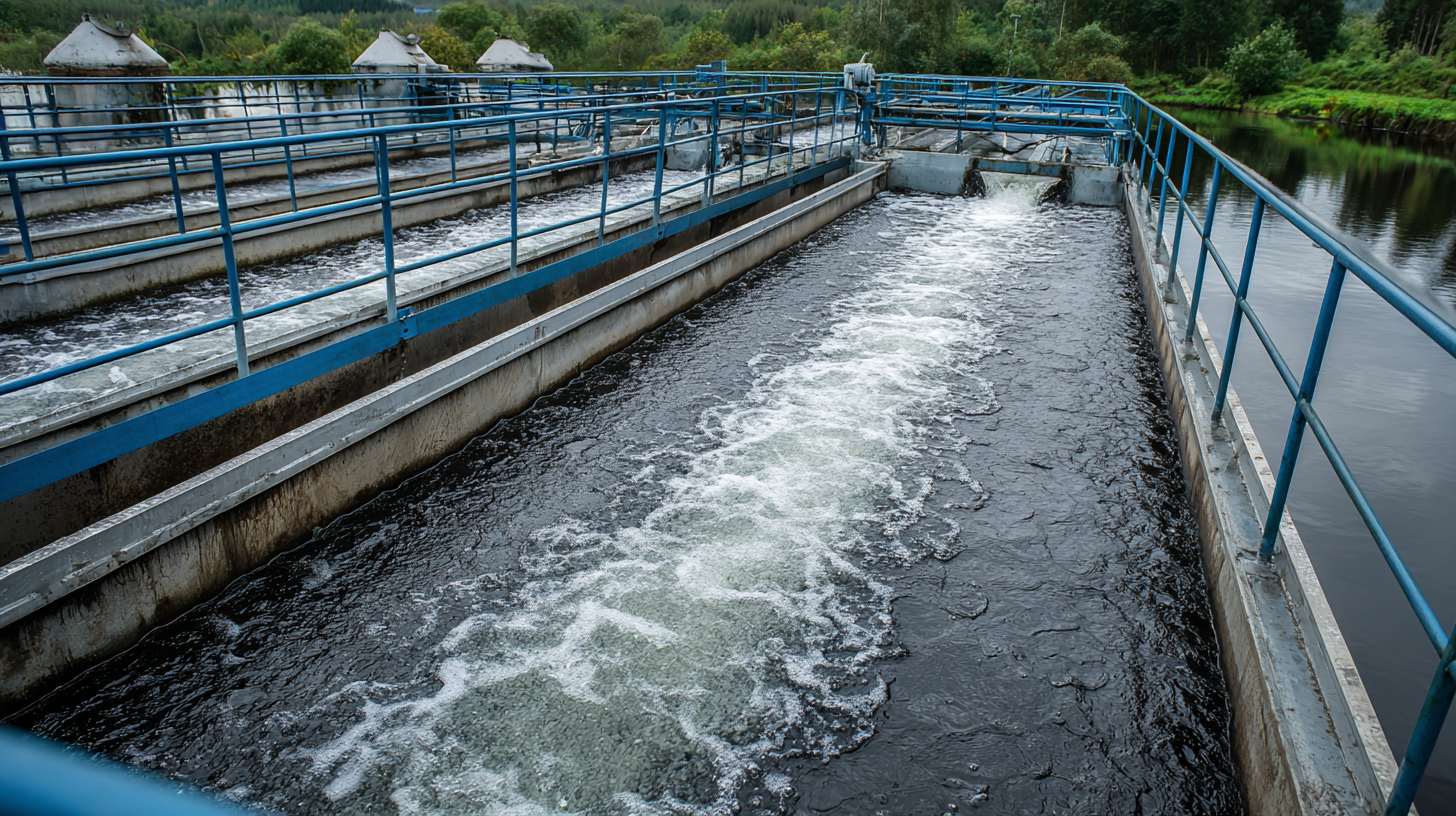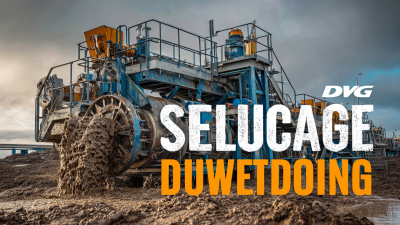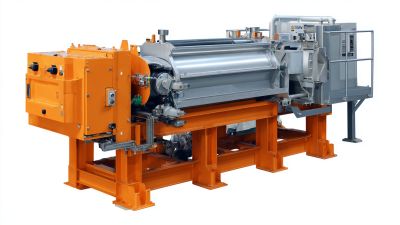 +86 13600513715
+86 13600513715



In the realm of wastewater treatment, the efficient separation of solids from liquids is a crucial process for ensuring the quality of treated effluent. One innovative solution gaining traction in this field is the Inclined Tube Settler, a technology designed to enhance sedimentation by maximizing the settling area in a compact footprint. By utilizing a series of inclined tubes, this system accelerates the gravitational settling of suspended solids, thereby improving overall treatment efficiency.

Understanding the benefits of Inclined Tube Settlers not only aids in optimizing wastewater treatment systems but also contributes to reducing operational costs and space requirements. In this article, we will explore the key advantages of Inclined Tube Settlers, allowing wastewater treatment facilities to adopt best practices for enhanced performance and sustainability. Additionally, we will provide useful tips for effectively integrating this technology into existing systems to achieve optimal results.
Inclined tube settlers have gained recognition as a highly effective component in wastewater treatment systems, primarily due to their enhanced sedimentation efficiency. These systems utilize a series of inclined plates, allowing particles to settle under the influence of gravity in a compact footprint. According to industry reports, inclined tube settlers can achieve sedimentation efficiencies of up to 90%, significantly outperforming traditional settling techniques. This efficiency not only improves the quality of the treated water but also reduces the overall space required for settling tanks.
Recent advancements, such as the implementation of inclined plate clarifiers in various wastewater treatment plants, demonstrate the practicality of this technology. For example, the La Mesa Water Treatment Plant in the Philippines has successfully integrated inclined tube settlers into its design, showcasing improved sludge removal capabilities while maintaining optimal operational efficiency. As a result, facilities employing inclined tube settlers can minimize sludge buildup and extend the lifespan of their treatment systems, ultimately leading to cost savings and better environmental outcomes.
| Dimension | Description | Benefits |
|---|---|---|
| Sedimentation Rate | The speed at which solids settle at the bottom of the settler. | Improved removal of suspended solids, leading to clearer effluent. |
| Space Efficiency | Inclined tube settlers utilize vertical space effectively. | Reduced footprint in wastewater treatment facilities. |
| Cost-Effectiveness | Lower operational and maintenance costs compared to traditional systems. | Savings on labor and reduced chemical usage. |
| Versatility | Can be used in different types of wastewater treatment applications. | Adaptable to varying influent characteristics. |
| Operational Simplicity | Easier to operate and manage than traditional settling tanks. | Reduced training time for staff and lower chances of operational errors. |
Inclined tube settlers are increasingly recognized for their efficiency in wastewater treatment systems, particularly in terms of minimizing footprint and optimizing space within treatment facilities. By incorporating a series of inclined tubes, these settlers facilitate the sedimentation process more effectively compared to traditional settling methods. The design allows for a greater surface area within a compact volume, enabling a higher rate of solids separation without requiring extensive space. This space-saving feature is particularly beneficial for urban areas where land resources are limited and expensive.
In addition to reducing physical space requirements, inclined tube settlers also enhance operational efficiency. Their ability to accelerate the settling of particulates allows facilities to manage higher volumes of wastewater with a smaller footprint. This not only lowers construction and maintenance costs but also contributes to achieving regulatory compliance in space-constrained environments. Overall, the integration of inclined tube settlers presents a compelling solution for wastewater treatment facilities aiming to maximize their effectiveness while minimizing their environmental and spatial impact.
 Inclined tube settlers are increasingly recognized as a vital component in wastewater treatment systems, particularly for their role in improving water quality. By utilizing gravity and the unique geometry of inclined tubes, these settlers facilitate the efficient removal of suspended solids from wastewater. According to recent industry reports, inclined tube settlers can enhance settling efficiency by up to 30%, resulting in clearer effluent and reduced load on subsequent treatment processes. This is particularly relevant as communities work to maintain the health of water bodies, such as Lake Clearwater, which is undergoing critical underground water monitoring to assess its ecological status.
Inclined tube settlers are increasingly recognized as a vital component in wastewater treatment systems, particularly for their role in improving water quality. By utilizing gravity and the unique geometry of inclined tubes, these settlers facilitate the efficient removal of suspended solids from wastewater. According to recent industry reports, inclined tube settlers can enhance settling efficiency by up to 30%, resulting in clearer effluent and reduced load on subsequent treatment processes. This is particularly relevant as communities work to maintain the health of water bodies, such as Lake Clearwater, which is undergoing critical underground water monitoring to assess its ecological status.
Integrating inclined tube settlers into wastewater systems not only aids in clarifying effluent but also contributes to the overall sustainability of water resources. A study from the Water Environment Federation emphasizes that implementing these technologies can lead to a significant reduction in nutrient runoff, benefiting surrounding ecosystems. Additionally, they support compliance with stringent discharge regulations, ensuring cleaner water entering our lakes and rivers.
Tips for optimizing the use of inclined tube settlers include regular maintenance checks to prevent blockages, adjusting the inflow rates to maximize settling time, and monitoring effluent quality to make informed operational adjustments. By following these practices, treatment facilities can enhance their water quality outcomes, ultimately contributing to the health of local aquatic environments.
Inclined tube settlers have gained attention in wastewater treatment systems for their cost-effective performance and efficient particle removal capabilities. According to a report by the Water Environment Federation, wastewater treatment facilities utilizing inclined tube settlers can achieve a removal efficiency of up to 90% for suspended solids, which is significantly higher compared to conventional settling tanks. This high efficiency not only leads to a reduction in the cost associated with downstream processes but also minimizes the required footprint for treatment facilities, ultimately lowering construction and operational costs.
In a cost-benefit analysis conducted by the Environmental Protection Agency, it was highlighted that the initial investment in inclined tube settlers pays off within the first few years of operation, with operators experiencing an average of 20-30% savings in ongoing maintenance and operation costs. This is primarily due to the reduced sludge production and lower energy requirements associated with the enhanced settling capabilities of inclined tubes. With projections suggesting that the global wastewater treatment market will reach $400 billion by 2025, the economic advantages of implementing inclined tube settlers present a compelling case for municipalities and industries looking to optimize their wastewater management practices.
This bar chart illustrates the cost-benefit analysis of inclined tube settlers in wastewater treatment systems. Key dimensions such as initial investment, maintenance cost, land area reduction, expected lifespan, and effluent quality improvement are represented, providing a visual insight into the economic advantages of implementing inclined tube settlers.
Inclined tube settlers have emerged as a superior alternative to traditional settling methods in wastewater treatment systems. Compared to conventional sedimentation tanks, which usually operate at low efficiencies, inclined tube settlers leverage the force of gravity and reduced settling distance to enhance particle separation. According to the Water Environment Federation, inclined tube settlers can increase settling efficiency by up to 50%, significantly reducing the required footprint for treatment facilities. This improved performance is particularly beneficial in urban areas where space is a constraint.
Furthermore, inclined tube settlers can handle higher flow rates without compromising on sedimentation performance. An industry report by the American Society of Civil Engineers indicates that these systems can improve the throughput of solids removal by up to 40%. Unlike traditional methods, which can suffer from issues like scouring and sludge resuspension, inclined tube settlers maintain a stable operation, leading to better overall effluent quality. Their design also results in lower energy consumption and operational costs, making them a financially attractive option for wastewater treatment facilities striving to meet increasingly stringent regulatory standards.







